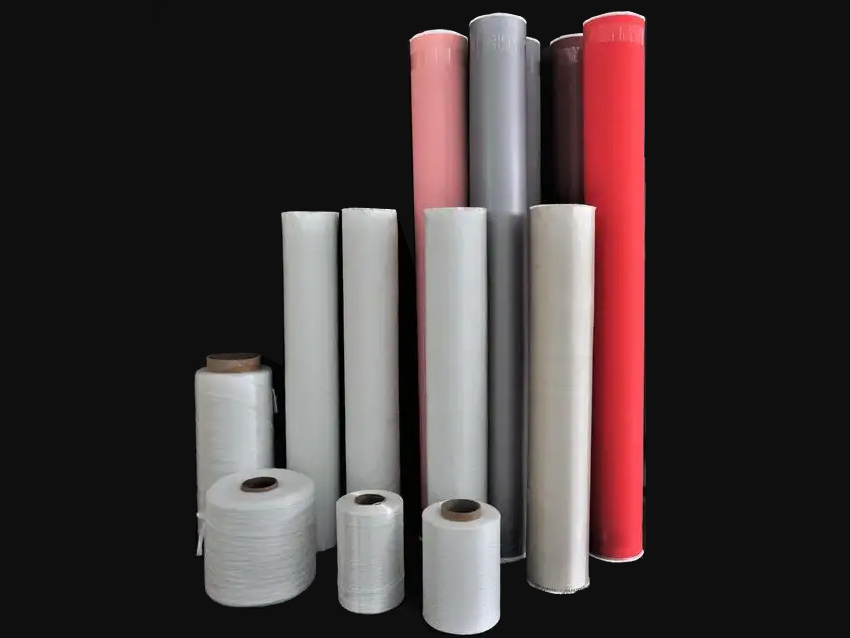Surface Coating of Fiberglass and Their Applications

Fiberglass and its fabric surface can be enhanced by coating with PTFE, silicone rubber, vermiculite, and other modification treatments. These coatings significantly improve the performance of fiberglass materials, making them more durable and versatile for various applications.
PTFE (Polytetrafluoroethylene) is known for its exceptional chemical stability, non-stick properties, aging resistance, corrosion resistance, and self-cleaning abilities. However, it has some limitations, including poor mechanical properties, low wear resistance, and poor thermal conductivity. Fiberglass, on the other hand, has excellent mechanical strength and physical properties. By coating fiberglass and its fabrics with PTFE, the weaknesses of PTFE are addressed, while the inherent advantages of fiberglass are maintained.
The combination results in a high-strength, abrasion-resistant, and aging-resistant material. Fiberglass coated with PTFE generally undergoes a multi-step impregnation process. This involves immersing the fiberglass fabric in a PTFE dispersion tank, followed by drying, baking, and sintering to ensure the PTFE resin particles adhere tightly to the fiberglass. The final material combines the superior properties of both PTFE and fiberglass. It is commonly used in construction, electronics, insulation, and friction materials.
Silicone rubber is renowned for its excellent electrical insulation, resistance to extreme temperatures, and high resistance to oxygen aging. When applied to fiberglass and its fabrics, it improves both flexibility and wear resistance. The resulting coated fiberglass fabric exhibits high tensile strength, dimensional stability, excellent electrical insulation, and resistance to chemical corrosion.
This composite material is widely used as an electrical insulating material, such as in insulating cloth, casings, and coatings. It is also utilized in corrosive environments, providing anticorrosive layers for pipelines and tanks. Additionally, it can serve as a building film and packaging material in the construction and energy sectors.
Vermiculite is a magnesium-containing hydroaluminosilicate mineral that can withstand extremely high temperatures (up to 1250°C). When heated and expanded, vermiculite increases in volume, reduces its thermal conductivity, and becomes lightweight, with excellent insulating properties. It also provides fire resistance, sound insulation, and frost resistance.
While fiberglass itself offers good heat resistance, prolonged exposure to high temperatures can degrade its performance, and direct flames may penetrate its structure. By coating fiberglass and its fabrics with vermiculite, the fire resistance is significantly enhanced, improving both fire retardancy and thermal insulation. Vermiculite-coated fiberglass products offer superior heat resistance, fire retardant properties, and insulation, making them ideal for applications in welding protection, fire safety, and pipe wrapping.